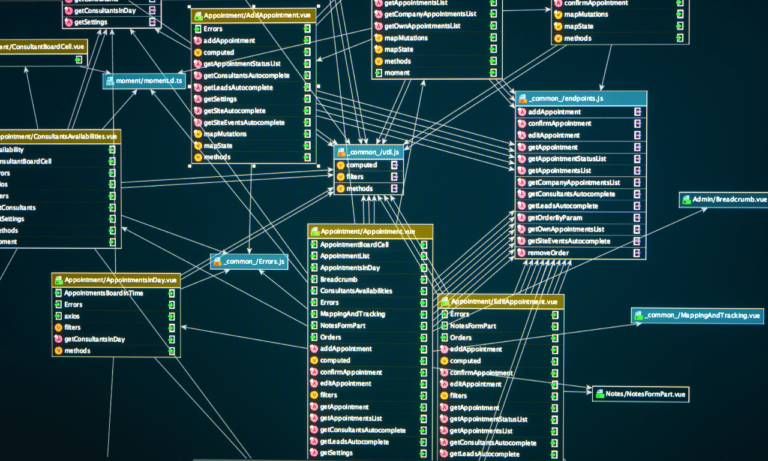Phone:
(+65)8319-0742
The educational landscape is ever-evolving, with innovative teaching methods such as Peer-Assisted Learning (PAL) making significant strides. PAL, a cornerstone in the domain of collaborative learning, is reshaping the way students engage with academic material. This interactive study groups model integrates upper-year students in the role of peer mentors to enhance the cooperative education process. It creates a support network where first-year students can thrive academically while feeling they belong to a community.
Since its surge in popularity during the 1990s, PAL has demonstrated its prowess in student retention, learning enhancement, and fostering a sense of belonging. By participating in PAL sessions, students experience judgement-free, interactive learning that empowers them to excel and supports them through the transition into higher educational environments.
Through the lens of peer mentoring, PAL can be seen as an investment in the future of education â one that not only benefits learners but also enriches the entire academic community.
Key Takeaways
- Peer-Assisted Learning revolutionizes the educational model through engaging, cooperative experiences.
- PAL’s interactive study groups provide a judgement-free zone for knowledge exchange and community building.
- Since the ’90s, collaborative learning has proven to enhance retention and create a sense of belonging among students.
- Peer mentoring enriches the learning environment by connecting students across different academic years.
- The integration of PAL within the university structure has transformed it into a pivotal element of modern education.
- PALâs community-based approach supports student success and progression in academic pursuits.
Exploring the Peer-Assisted Learning Approach
The Peer-Assisted Learning approach, commonly referred to as PAL, charts a course away from traditional instructional methodologies toward a more collaborative and inclusive model. It endorses the principle of student-led teaching and leverages the collective knowledge within academic communities to elevate the educational experiences of students.
Since its inception in the late 1990s, the PAL program has a rich history, with various institutions worldwide implementing it to cater to diverse student needs. These programs have successfully fostered environments that nurture team-based learning and demonstrated the profound impact of students teaching and learning from their peers.
History and Evolution of PAL in Academia
Tracing the PAL program history, we see the adaptive nature of PAL as it has grown to meet the changing demands of students and educators alike. At its core, PAL marks a shift from competitive to cooperative education, engendering an ecosystem where knowledge is communicated and absorbed collectively.
Understanding the PAL Model and Its Key Components
The foundation of the PAL model is the relationship between the PAL leadersâoften more experienced studentsâand the learners. PAL sessions typically entail interactive discussions, problem-solving scenarios, and review sessions that empower students to grapple with course concepts in a supportive, non-threatening environment. This student-centered framework effectively democratizes learning and transforms participants into active stakeholders in their educational journey.
The Impact of PAL on Student Success and Inclusion

Peer-Assisted Learning (PAL) is a unique approach designed to improve the educational landscape, enhancing not only academic success but also promoting a robust student support network. Providing personalized mentorship and fostering stronger connections, PAL plays a crucial role in helping students navigate the complexities of higher education.
With the imperative of building a strong sense of community and sense of belonging among students, PAL initiates a dynamic that encourages inclusion and mutual respect. This nurturing environment is critical in breaking educational barriers, offering a platform where all students can benefit from collective wisdom and support.
Enhancing Academic Achievement and Sense of Belonging
The synergy created in PAL sessions not only augments learning outcomes but also instills a feeling of connection and engagement among participants. When students perceive that they are part of a supportive learning community, their motivation and self-confidence soar, fueling their journey towards academic excellence.
Breaking Down Barriers in Education Through Peer Support
PAL deconstructs the traditional confines of educational systems by introducing an atmosphere where everyone can contribute and learn without fear of judgement. This open environment enables students from diverse backgrounds to collaborate effectively, paving the way for a more egalitarian and successful educational experience.
| Traditional Learning | Peer-Assisted Learning |
|---|---|
| Isolated study efforts | Collaborative learning experiences |
| Competitive environments | Communal, non-competitive support |
| One-size-fits-all teaching | Adaptive and personalized guidance |
| Limited student engagement | Active participation and engagement |
The compelling contrast between traditional and PAL-based education systems highlights the transformative power of embracing a student-centered approach that integrates a sense of belonging and encourages breaking educational barriers.
Building Strong Learning Communities with Interactive Study Groups

At the heart of modern educational enhancement lies the concept of building a robust student support network that revolves around interactive study groups. These dynamic collectives are integral to the success of Peer-Assisted Learning (PAL), where peer-assisted study sessions are not merely about academic growth, but also about nurturing a cohesive community among students. They provide a platform for intellectual exchange and personal connection, representing the social threads that weave together a strong educational tapestry.
When evaluating the effectiveness of these study groups, it becomes evident that the collaborative nature of these sessions acts as a catalyst for student engagement and knowledge retention. Below is an overview of the key facets that contribute to the construction of these vibrant learning communities:
- Communication Channels: Open and ongoing dialogues within these study groups encourage transparent knowledge sharing.
- Peer Learning Dynamics: Students interact in an environment that promotes mutual teaching and learning experiences.
- Study Session Outcomes: Active participation in group studies often results in improved comprehension and higher academic performance.
| Benefits | Tools Employed | Measured Outcomes |
|---|---|---|
|
|
|
The journey through academia is marked with challenges that can be significantly mitigated through the support structures provided by interactive study groups. As part of a comprehensive student support network, these groups are essential for enriching the academic experience and cultivating a supportive atmosphere within learning institutions.
Empowerment and Leadership Through Student-led Teaching
The practice of student-led teaching within Peer-Assisted Learning (PAL) programs plays a pivotal role in the empowerment of students who step into leadership roles. By engaging in PAL, the symbiotic relationship between learning and teaching is emphasized, providing a progressive environment for personal growth and the cultivation of leadership skills.
Cultivating Leadership Skills in PAL Leaders
Leadership through PAL is not merely about the transmission of knowledge; it is a transformative process that instills confidence and autonomy in PAL leaders. They learn to navigate the complexities of directing a group, resolving conflicts, and presenting ideas compellingly â skills that are indispensable in any leadership scenario.
Fostering Responsibility and Ownership Among Students
In taking on the responsibility of mentoring their peers, PAL participants embrace a heightened sense of ownership over their educational journey. This active engagement in the learning process promotes the development of self-regulated learning strategies and a proactive attitude towards academic challenges.
| Aspect of Growth | Benefits in Student-led Teaching | Long-term Impact |
|---|---|---|
| Communication Skills | Refinement of explaining complex concepts, active listening, and feedback | Enhanced interpersonal skills in both academic and professional settings |
| Organizational Competence | Effective session planning and time management | Preparedness for managing projects and meeting deadlines in the future |
| Teamwork and Collaboration | Experience in working with diverse groups and building consensus | Ability to contribute to and lead team efforts adeptly in any environment |
| Critical Thinking | Applying analytical skills to assist peer learning and problem-solving | Improved decision-making abilities that are crucial for real-world issues |
Through the mechanism of empowerment and student-led teaching, Peer-Assisted Learning not only contributes to a student’s immediate academic performance but also sows the seeds for ongoing personal growth and the development of future leaders.
Peer-Assisted Learning

The paradigm of education continues to shift as Peer-Assisted Learning (PAL) becomes a more significant feature in classrooms and beyond. This instructional approach has shown profound potential in bolstering students’ academic foundations, providing an enriched learning experience through collaboration and mutual support. In this section, we delve into the intricacies of PAL, highlighting its beneficial impact on educational attainment and personal development.
PAL’s effectiveness stems from its dual-benefit architecture, wherein student mentors develop leadership and communication skills as their peers gain deeper insights into their curriculum. By sharing knowledge and resources in an informal yet structured environment, these interactive sessions promote a deeper understanding of educational materials, driving both collective and individual success.
- Encourages active participation and enhanced academic engagement.
- Builds a stronger academic support system among peers.
- Facilitates the acquisition of transferable skills like problem-solving and critical thinking.
Moreover, PAL integrates seamlessly into various educational models, thereby creating synergy between student-driven learning and formal instruction. Its adaptable framework ensures that learners from diverse backgrounds can find common ground to collaborate effectively. This inclusivity is pivotal in contemporary education as it fosters a rich, evolving learning culture.
In conclusion, Peer-Assisted Learning is more than a mere academic tool; it is a transformative experience that inculcates community, empowerment, and life-long learning skills. As education continues to evolve, PAL’s role in shaping proactive, collaborative, and adaptive learners becomes ever more vital. With its emphasis on peer support and interactive engagement, PAL is indeed a cornerstone of future educational success.
Revolutionizing Learning Outcomes With Peer Teaching Strategies
The emerging philosophy of peer teaching strategies is pivotal in the current educational landscape, providing learners with opportunities that extend beyond traditional lectures into more dynamic, participatory realms of academic collaboration. This transformative approach does more than simply impart knowledge; it reshapes the learning paradigm, equipping students with real-world skills that apply well beyond the classroom.
Connecting Theory to Practice in Academic and Workplace Settings
In an era that emphasizes the application of theoretical concepts, peer teaching strategies stand as a bridge between classroom learning and practical implementation. These strategies encourage learners to engage with material interactively, applying their knowledge in simulations that mirror real-world scenarios. Not only does this facilitate a deeper understanding of subject matter, but it also prepares students for the complexities of professional environments.
Tools and Methodologies That Facilitate Effective PAL Sessions
To maximize the effectiveness of Peer-Assisted Learning (PAL) sessions, a variety of tools and methodologies are employed. From role-playing exercises that simulate workplace challenges to case studies that bring theoretical concepts to life, these strategies are as diverse as they are beneficial. Technology plays a significant role; collaborative platforms facilitate group projects and discussions, while digital resources offer a wealth of information at the students’ fingertips. Combining these digital aids with traditional tactile learning tools creates an enriched tapestry of educational experiences.
- Collaborative software for real-time group work
- Interactive polls and quizzes for immediate feedback
- Discussion forums for in-depth topic exploration
- Case studies for context-specific learning
The result is a learning atmosphere where theory and practice seamlessly converge, fostering a community of learners ready to tackle the challenges of today’s fast-paced academic and professional landscapes.
Conclusion
As we’ve navigated through the intricacies of Peer-Assisted Learning, one thing stands clear: the move towards collaborative learning models like PAL is a significant milestone in the evolution of education. From its roots in the 1990s to its contemporary applications, PAL has reshaped the way students interact with their coursework and each other. We’ve uncovered the framework of PAL, with an emphasis on interaction, cooperation, and peer mentoring, all instrumental in enriching the academic journey for students at various levels.
The positive ramifications of PAL are wide-ranging, encompassing everything from individual student success to the creation of inclusive learning communities. It’s evident that this approach not only boosts academic achievement but also builds confidence and bridges the gap to a well-rounded educational experience. Moreover, as PAL leaders cultivate leadership skills and participants take proactive ownership of their learning, the traditional teacher-student dynamic transforms into an empowering and engaged scholarly collective.
In closing, Peer-Assisted Learning stands as a testament to the dynamic and transformative power of student-led teaching strategies. It’s a tool that not only revolutionizes learning outcomes but also prepares students for real-world challenges by effectively connecting theory with practice. As educational landscapes continue to evolve, the principles of PAL are certain to influence both current pedagogical practices and future innovations in teaching and learning methodologies.
FAQ
What is Peer-Assisted Learning (PAL)?
Peer-Assisted Learning (PAL) is an educational approach that promotes collaborative learning through student-led study groups and sessions. It involves upper-year students acting as PAL leaders or mentors, facilitating interactive study groups, and helping their peers to enhance learning and retention of course material in a cooperative education environment.
How did PAL originate, and how has it evolved?
PAL originated in the 1990s as a response to the limitations of traditional educational models. Over time, it has evolved into a widespread practice in academia, focusing on team-based learning and peer mentoring to enhance student learning experiences and outcomes.
What impact does PAL have on academic success and inclusion?
PAL has been shown to improve academic success and retention rates, as it creates a more inclusive and engaging learning environment. It also promotes a sense of belonging and community among students, breaking down educational barriers and facilitating peer support networks.
How do interactive study groups strengthen learning communities?
Interactive study groups encourage students to actively participate and share knowledge, leading to a deeper understanding of the material. This collaborative effort fosters a stronger sense of community and support within the learning environment, contributing to a more meaningful and holistic educational experience.
In what ways does PAL foster empowerment and leadership?
PAL empowers students by providing them with opportunities to lead and mentor their peers, which cultivates essential soft skills like communication and critical thinking. This hands-on experience in student-led teaching encourages both personal growth and leadership development within the PAL program.
How can PAL be integrated into higher education systems?
PAL can be integrated into higher education systems by setting up formalized PAL programs through student unions or academic departments. Training sessions for PAL leaders, dedicated spaces for collaborative study, and support from faculty can ensure the successful implementation and sustainability of these programs.
What are some effective strategies for conducting PAL sessions?
Effective PAL sessions typically involve active learning techniques such as discussion, problem-solving, and peer teaching strategies. Creating a structured yet flexible agenda, encouraging participation, and offering diverse methodologies can all contribute to more dynamic and productive PAL sessions.
How do PAL leaders benefit from their roles?
PAL leaders gain numerous benefits from their roles, such as the development of leadership skills, improved communication abilities, and a deeper understanding of the subjects they teach. This experience also enhances their résumés and provides a valuable service to their peers, reinforcing a strong academic and social network.
Can PAL be beneficial beyond academic settings?
Yes, the skills and experiences gained through PAL have practical applications beyond academic settings. The collaborative and interpersonal skills honed through PAL are transferable to workplace environments, making it a useful practice for professional and career development.
Source Links
- https://www.stjohns.edu/news-media/johnnies-blog/peer-tutoring-mentoring-college-students
- https://www.togetherplatform.com/blog/peer-teaching-overview-benefits-models
- https://www.port.ac.uk/news-events-and-blogs/blogs/education-matters/breaking-down-barriers-and-empowering-students-through-peer-assisted-learning

















